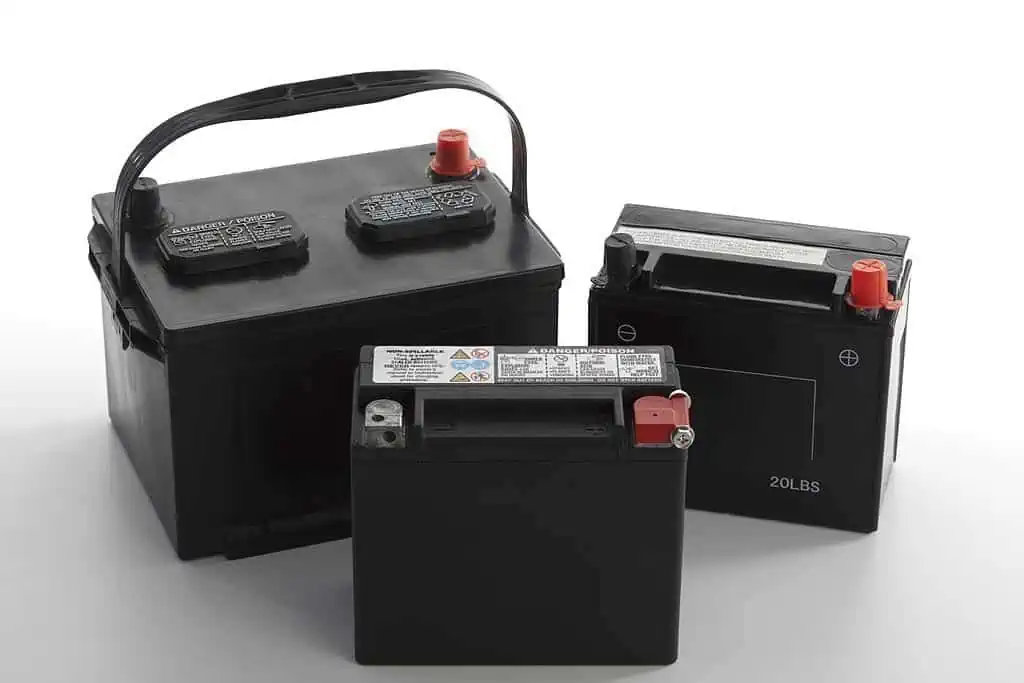Does A New Lawn mower Battery Need To Be Charged? Battery-powered lawn mowers have evolved, over a couple of decades and more, to be a standout alternative to their gas-powered equals.
With these fantastic machines, your overall mowing experience has never been better. A battery-powered mower is your go-to guy if yours is a smaller yard or lands up to 2 acres.
If you recently purchased a new lawnmower or a new battery for an old one, one key question might be, “Do you need to charge a new lawn mower battery before using it?”
A misunderstanding of how lawn mower batteries work can make or mar your machine. We are sure you don’t want that, and this is the basis of this comprehensive content written to improve your mowing experience.
Shall we?
What kind of batteries do battery-powered mowers use?

These types of lawnmowers are powered by lithium-ion batteries, which can get charged rapidly, have a vast capacity, and release much more power relative to the older type of power tool batteries. Electric walk-behind lawn mower batteries usually have sufficient charge for out-of-the-box use.
This, however, is not necessarily the norm, as you may open the box of your new lawnmower to find that the battery is either not fully charged or not charged at all. As for riding lawnmower batteries, there is rarely a need to charge them since, like regular car batteries, they usually come in 12-volt.
While push mower batteries usually will have some charge in them by the time they leave the factory, this is not often the case. And here is where lithium-ion batteries come into play; they have an extremely fast charge time.
Do you need to charge a New Lawn Mower Battery?
Did you get a new push mower that is battery-powered, and you are not sure whether or not you should charge the battery? Well, here is the answer. Any new battery purchased from the factory should be charged enough to get the machine on the go and mow, even if a small portion of grass.
You should not expect it to be fully charged, especially if it has been on the ground for some time after the purchase. And yes, a few times, batteries come from factories with little to zero charge.
It should normally have a charge when you take possession of your riding lawnmower. Some potential buyers should know this; if a riding lawnmower is left without use for two to four weeks, it can very well lose its charge, and a way to forestall this is for the store you bought it from to help run the machine from time to time.
If your new riding lawn mower comes with a battery dead on arrival, you should immediately get across to the seller or manufacturer.
Type of Lawn Mower Batteries

Different types of batteries come with different types of lawnmowers. Push mowers that work with batteries normally use a Lithium-ion battery of various voltages and are designed by the same manufacturers that produce other types of lawnmowers.
Riding lawnmowers have a 12-volt battery, and although it is similar to the kinds found in cars, the scale is relatively smaller.
1. Push Mowers
Just a decade ago, powering a lawnmower with a battery was possible but not practical. It takes much more than regular hand tools rotating the blades to get a lawnmower working.
Until lithium-ion batteries declined in price enough for yard owners to buy, the popular battery for power gadgets was one of Nickel-Metal Hydride (NiMH) or Nickel-Cadmium (NiCD), both of which were not only rechargeable but could supply the requisite power to move a power tool.
NiMH and NiCD batteries, however, represent several complications that render them unfavorable for lawn mowers, especially. Some of those complications are:
- Inability to retain charge
- Provision of power lesser than Li-Ion battery
- Long charge duration
This means that mowing one acre of land could take lots of hours because, unless you have better batteries for replacement, you will need to charge the battery several times in between usage.
If a NiCD battery can generate enough power to operate a lawnmower, it is probably quite large. Li-Ion batteries are the superhero alternatives, which can house a lot of power in a small space and charge in pretty little time.
Do you know what this means for you? Through the agency of Li-Ion batteries, your lawnmower can run over a quarter acre, even on one single charge.
Another rewarding feature of many contemporary battery-powered push mowers is that they differ in the level of power expended based on the grass resistance. Different parts of your lawn, hence, may demand different power releases. This quality prolongs battery life and lets you run over larger grasses on a single charge.
2. Riding mowers
Riding lawnmowers are big 12-voltage lead-acid batteries, precisely like those in your car. These batteries are primarily designed to power your lawnmower’s engine.
And here is one enriching fact: when the batteries are new, you do not need to charge them. And by leaving the engine to run, you can also back up the charge consumed in starting the machine.
This is not to say 12-volt batteries do not lose charge; as they age, they not only begin to lose charge, they shrink in their ability to retain a change.
If you have been having tough times starting your riding mower and continuously need to jump it, it is probably time you got a battery replacement.
Bottom Line
If your lawnmower is newly bought, chances are that the battery comes with some charge on it. Riding lawnmowers come with Li-Ion batteries and can retain a charge for months.
So long it comes charged from the manufacturer, you probably have nothing to worry about. However, it is not impossible that you may find your new battery without charge, and if you find yourself in that case, kindly read this article for directions.






